The Ultimate Guitar Capo Guide: Types, Tips & Top Picks for Every Player (2025)
Discover the best guitar capos by style, with expert tips, comparisons, and top model recommendations for every type of player.
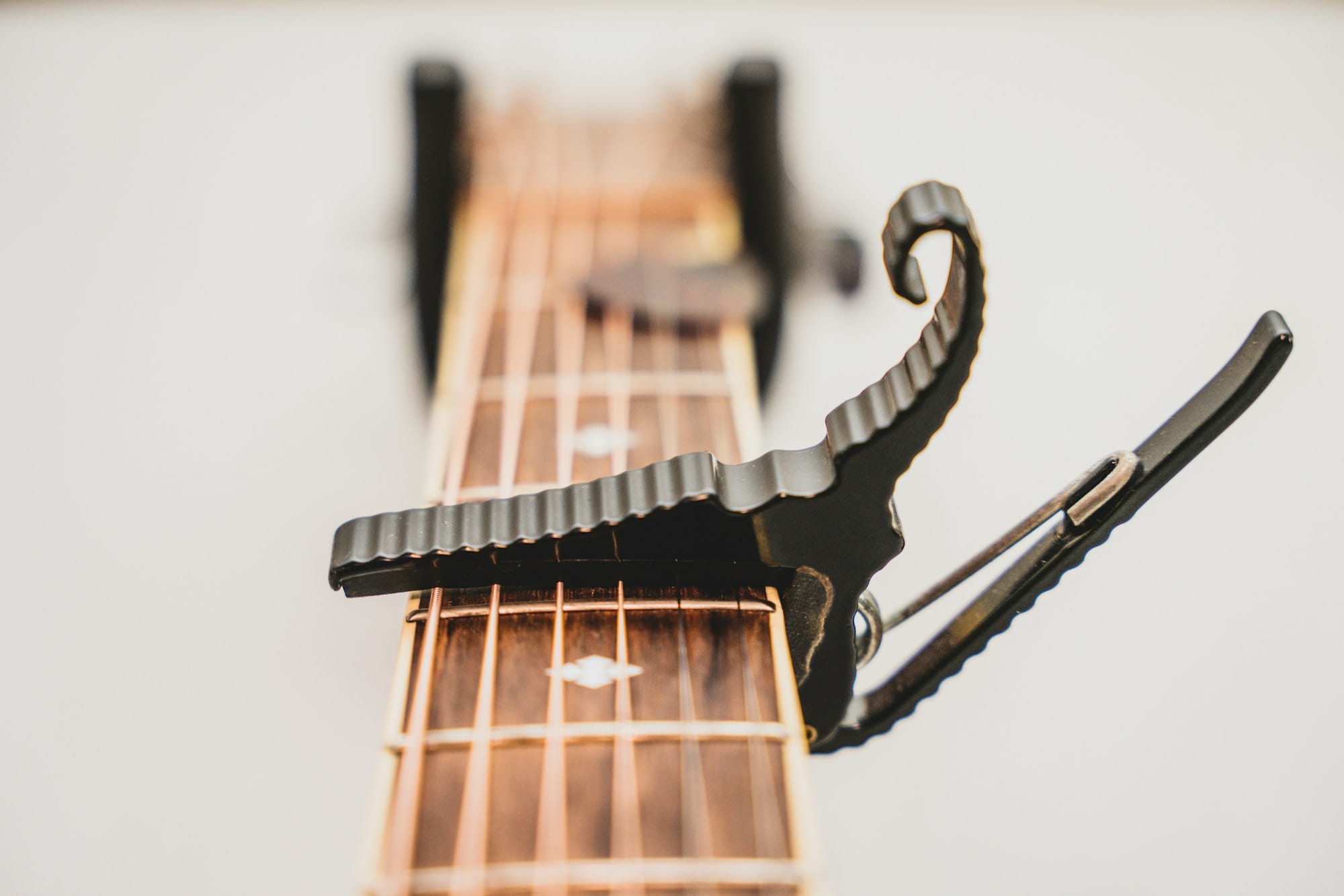
Updated April 2025
Whether you're strumming by the campfire or recording fingerstyle arrangements in the studio, a quality guitar capo is an essential part of your toolkit. This guide breaks down the different capo types, how they work, and which models are most popular among guitarists today—plus tips to improve tone, intonation, and ease of use.
What Is a Guitar Capo and Why Use One?
A good guitar capo is integral to acoustic guitar life. The ability to recreate luscious open chords in new keys is critical to the acoustic guitar's versatility.
A capo is a clamp-like device that presses down across the strings of your guitar to raise the pitch. This allows you to play in different keys while using familiar open chord shapes—perfect for accompanying vocalists, experimenting with alternate tunings, or getting that signature acoustic “ring.”
For a deeper dive into capo mechanics, check out: How To Use A Guitar Capo...In 97 Seconds
🎸 Main Types of Guitar Capos

1. Strap Capos
Strap capos do what their name implies - they attach to the guitar neck via a strap. The capo is nothing more than a bar with an elastic or "tightenable" (is that a word?) strap attached to it.
✅ Pros:
- Lightweight and inexpensive
- Easy to slide up and down the fretboard
⚠️ Cons:
- Strap elasticity wears out over time
- Can slip and affect tuning
🔍 Recommended:
- Dunlop 7191 Bill Russell Elastic Heavy Capo
- Jim Dunlop 70F Flat Strap Elastic Guitar Capo
- Performance Plus GC-F Flat Elastic Capo for Classical Guitar
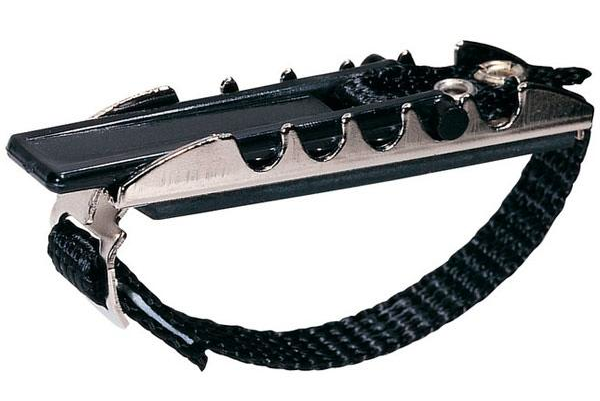
2. Toggle Capo
Same as the Strap capo, but in order to tighten the strap, you pull a toggle that snaps the capo tight. Kind of like latch on a toolbox.
✅ Pros:
- Budget-friendly
- Fast to put on/take off
⚠️ Cons:
- Toggle can pull strings out of tune
🔍 Recommended:
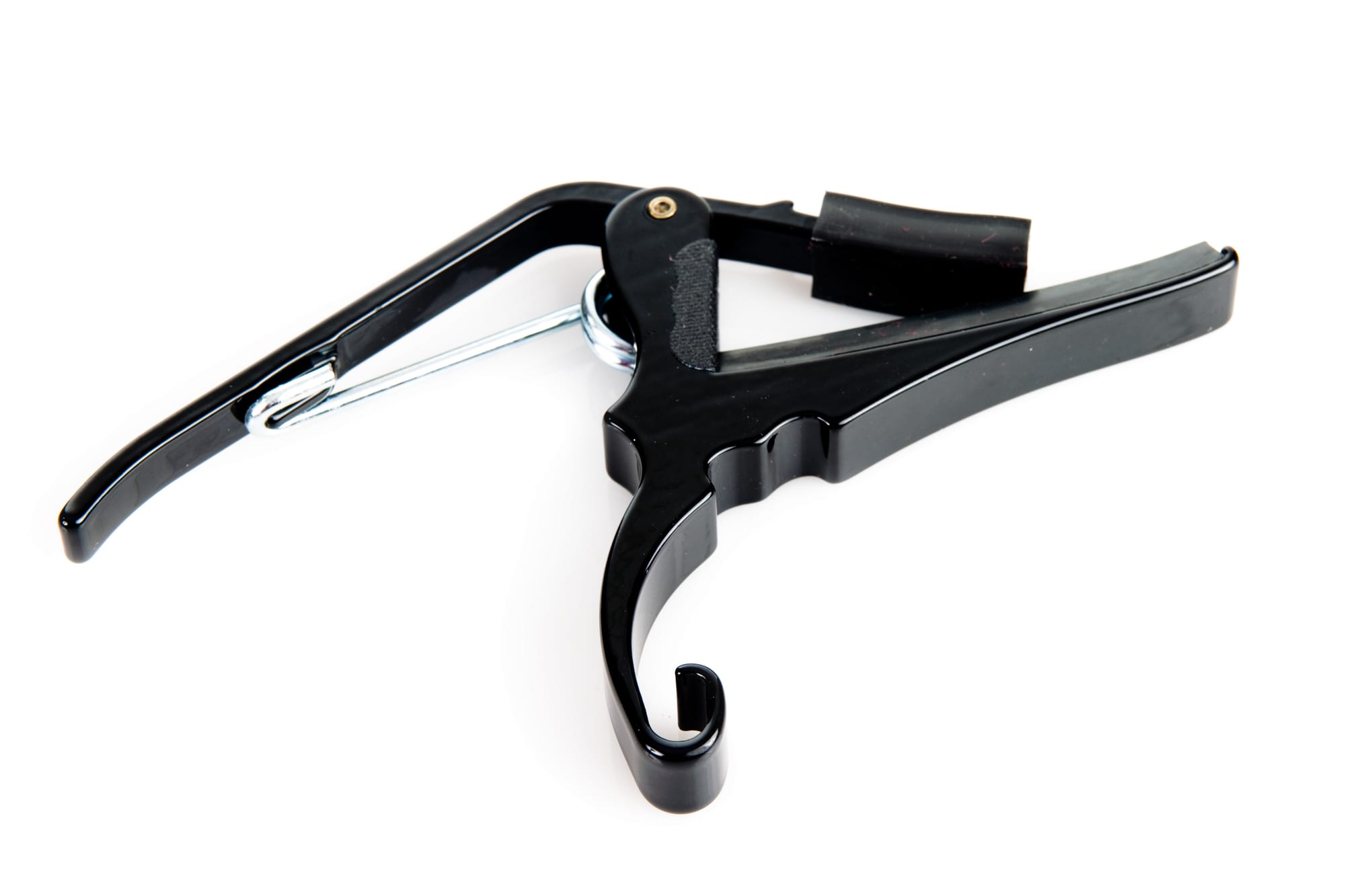
3. Trigger Capos
Trigger capos function just like the "chip clip" you put on your bag of Doritos. You press the clamp, place over guitar neck, and release, allowing the capo to clamp down on the neck. These are very popular.
✅ Pros:
- Quick and easy one-handed use
- Great for live gigs
- Durable design
⚠️ Cons:
- Uneven pressure can affect intonation
- Can dig into neck wood if not padded
🔍 Recommended:
- Kyser KG6B 6 String Capo
- Dunlop 84FB Acoustic Trigger Capo
- Nordic Essentials Aluminum Metal Universal Guitar Capo

4. Spring Capos
Same as the Trigger capo, but uses a slightly more sophisticated spring mechanism to apply pressure.
✅ Pros:
- Solid grip
- Easy one-hand placement
⚠️ Cons:
- Still applies lateral pressure (intonation can suffer)
🔍 Recommended:

5. Adjustable Screw Capos
Adjustable screw capos have been around a long time. It feels like any old acoustic guitar case I open has a Shubb hanging out in the pocket inside. This capo operates by having a screw that you tighten down, applying pressure to the back of the guitar neck (typically through an arm). This allows the screw to apply pressure evenly from the back. A good capo for recording or home practice.
✅ Pros:
- Excellent tuning stability
- Great for recording sessions
- Inexpensive and reliable
⚠️ Cons:
- Slower to reposition on stage
🔍 Recommended:
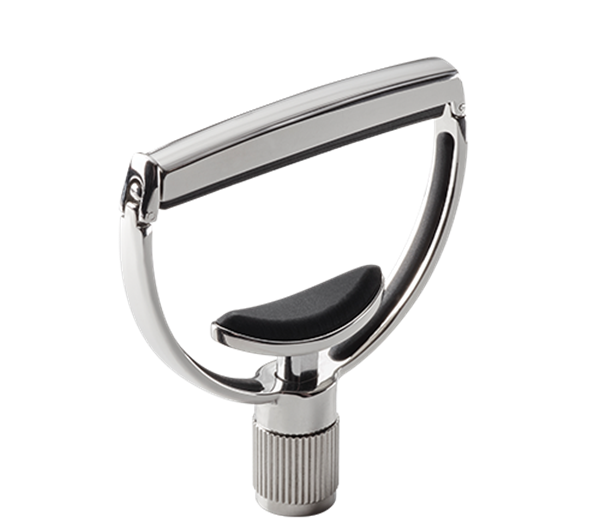
6. Yoke-style Capos
Yoke-style capos are similar to adjustable screw capos. They both use a screw on the back of the guitar neck to apply pressure to tighten the capo. The yoke-style capo, though, compeletly wraps around the neck. This allows the screw to apply pressure from dead center in the back of the neck. The front capo pad swings open using a hinge. These capos look very cool (or maybe a bit elaborate, depending on your taste).
✅ Pros:
- Perfectly even pressure
- Sleek, professional design
⚠️ Cons:
- Slower setup
- Higher cost
🔍 Recommended:
7. Unique Designs...
There are a host of unique designs for capos, as well. Check out the links at the bottom of this article if you're interested in exploring. Here are a few more popular examples:
The Performance 2
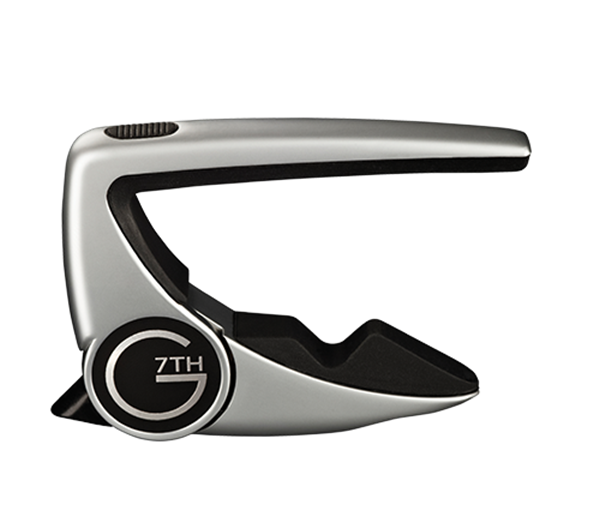
G7th has a popular capo - the Performance 2. This capo uses a unique tension system so that you close the capo and it holds (with good strength) at whatever position you place it. No springs, chip-bag-clip-like pinching - very neat and easy.
Partial Capos
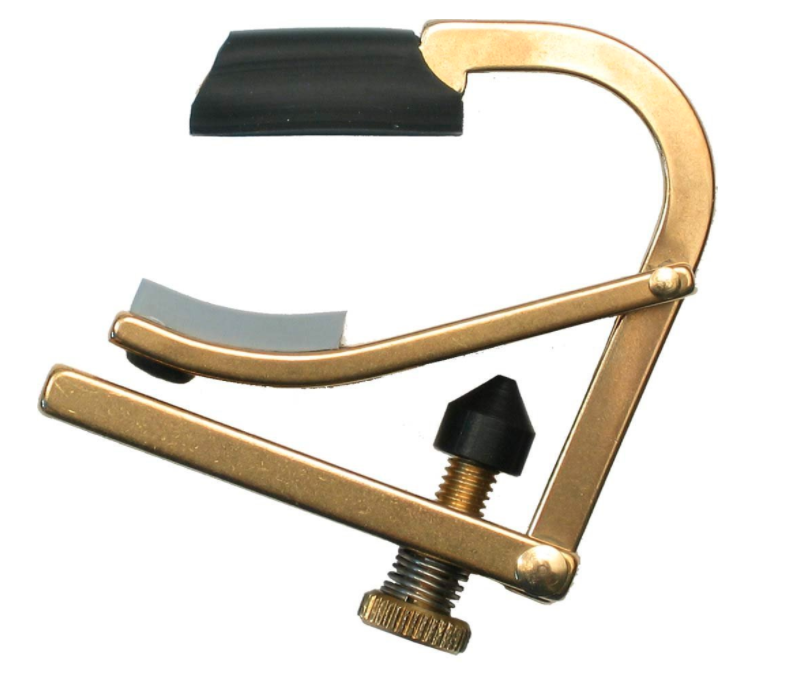
Partial capos are also popular with acoustic guitarists using alternate tunings, or complicated chord voicings. The capo is typically a spring or adjustable screw style capo. It only has a short piece that clips to the fretboard, maybe covering 3 of the 6 strings.
🔍 Recommended:
- Shubb C7B Brass Partial Capo (covers 3 inside strings)
- Kyser Short-Cut Capo
- G7th Newport Partial #3 Capo
Unique Creations
Ever seen a capo with built-in tuners or individual string clamps? Check out:
🎯 Choosing the Right Capo for You
| Type | Best For | Price | Quick to Use | Tuning Stability |
|---|---|---|---|---|
| Strap | Beginners, budget setups | 💲 | ✅ | ❌ |
| Trigger | Live performances | 💲💲 | ✅✅ | ⚠️ |
| Screw | Studio, precision players | 💲💲 | ❌ | ✅✅ |
| Yoke | Pros, collectors | 💲💲💲 | ⚠️ | ✅✅✅ |
| Partial | Alternate tuning explorations | 💲💲 | ✅ | ✅ |
🧼 Capo Maintenance Tips
- Clean regularly: Use a soft cloth to wipe down after use to avoid grime buildup.
- Store properly: Avoid tossing it in your gig bag where it can get bent or damaged.
- Inspect pads: Replace worn rubber pads to maintain even pressure and tuning stability.
📚 Further Reading
💬 Got a Favorite Capo?
Let us know in the comments! And don’t forget to share this guide with your fellow guitarists.
Want more guides like this? Subscribe for more!
